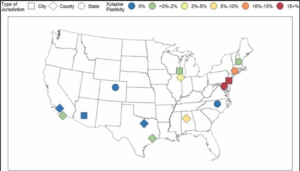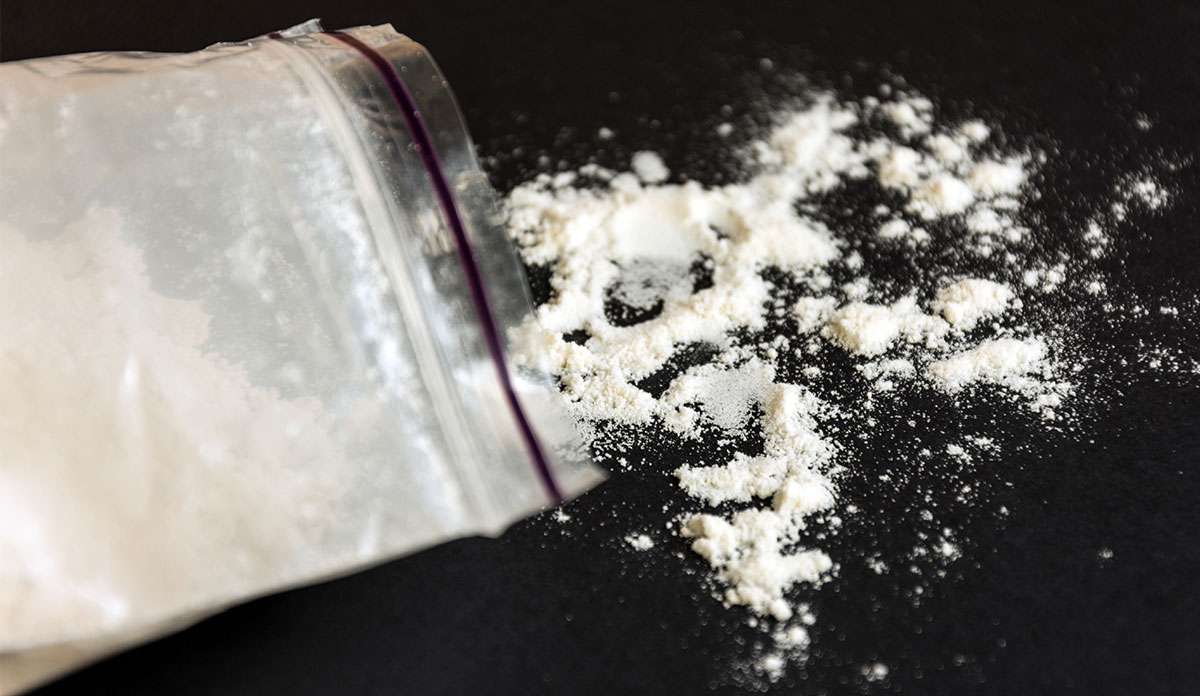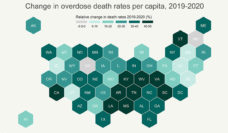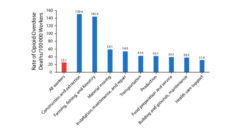Estimated overdose deaths in the U.S. were nearly 108,000 in 2021 linked primarily to fentanyl. In recent years, the veterinary tranquilizer xylazine has been increasingly present in overdose deaths. As a veterinary medication, xylazine is not a controlled substance and not comprehensively tracked nationally. As a non-opioid tranquilizer, xylazine could threaten to increase the already high number of overdoses in the U.S. From 2015 to 2020, the prevalence of xylazine in overdose deaths increased from 0.36% to 6.7%, with the largest increase occurring from 2019 to 2020.
According to the CDC, the tranquilizer is not intended for human use and can cause serious heart problems. Recent research from Joseph Friedman and colleagues interviewed front line workers and persons who use drugs in areas with higher prevalence of xylazine. These participants noted increased severity of injection injuries, including skin damage or even death of tissue; researchers are unsure of the mechanism. The black outs associated with xylazine enhanced drugs can also be very dangerous. One interviewee describes falling over and cracking his skull open on train tracks after unknowingly injecting drugs cut with xylazine. “You know, the old heroin, that was just heroin, was dangerous enough, but the tranq is just really a whole other world.”
Xylazine was first seen as a drug additive in Puerto Rico. When mixed with opioids such as heroin, xylazine became known as “tranq dope.” Xylazine showed up in Philadelphia in the mid-2010’s. and has risen in the U.S. drug supply since. Tranq-dope became a sought-after drug in Philadelphia due to xylazines ability to give opioids “legs,” describing how xylazine extends the effects of drugs like heroin, methamphetamine, or cocaine. Friedman’s study samples national data on overdose deaths broken into 10 jurisdictions across the country.

On the map above, Friedman and team shows the spread and concentration of overdoses involving xylazine. Deaths were most concentrated in the Northeast with over 15% of overdose deaths showing the presence of xylazine, and lowest in the Western states where less than 2% of overdose deaths involved the tranquilizer. The spread and concentration of xylazine from East to West is similar to the trajectory of fentanyl when it entered the drug supply in the late 1990’s before taking off in the 2010’s.
Overdose risk presents the greatest concern with the increasing use of xylazine. There is no recommended drug to reverse the effects of xylazine, but the symptoms can be treated in a hospital. Supporting research suggests that naloxone, used to reverse opioids during overdose, does not affect the tranquilizer. Fentanyl was present in 98.4% of xylazine-present overdose deaths, and this combination may be particularly lethal. Administration of naloxone remains important for reversing the effects of overdose, but the symptoms of xylazine may require supportive care from health care centers.
A cluster of overdoses in Austin, Texas (reported in March 2022) is suspected to be linked to drug cocktails containing xylazine. Health authorities will now increase the tracking of or restrict the purchase of xylazine to slow the spread of tranq across the country.
Map via Joseph Friedman et al, Xylazine spreads across the US: A growing component of the increasingly synthetic and polysubstance overdose crisis, Drug and Alcohol Dependence, 2022.
Photo via Getty Images














